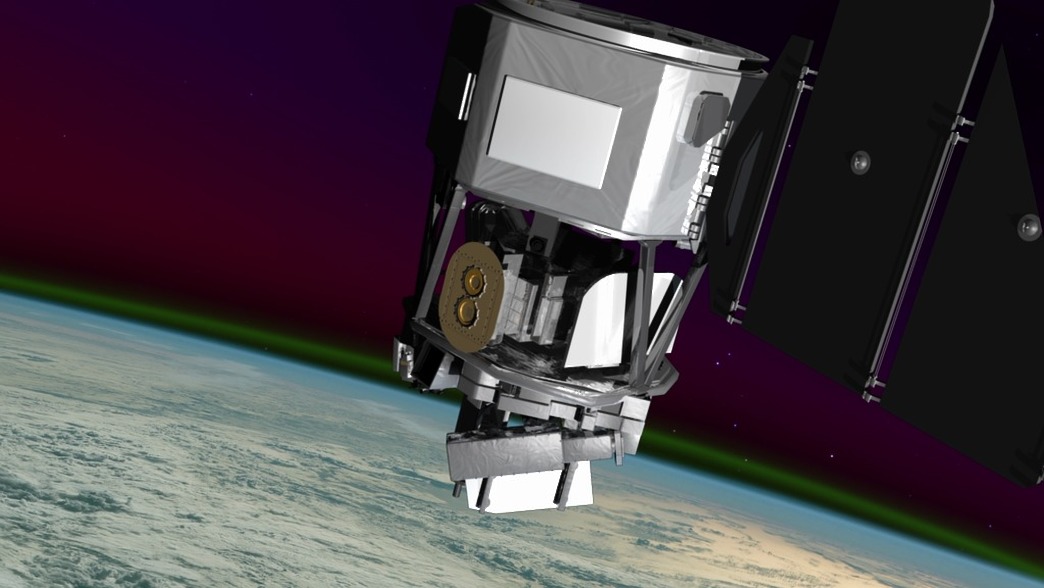Media will have the opportunity June 4-5 for tours, interviews and photographs of NASA’s Ionospheric Connection Explorer (ICON) as it prepares to leave Vandenberg Air Force Base in California for a scheduled mid-June launchfrom Kwajalein Atoll in the Marshall Islands.
ICON team members will be available to answer questions about Orbital ATK’s Pegasus XL rocket, which is attached to the company’s L-1011 “Stargazer” aircraft and will carry ICON into orbit. There also will be opportunities to tour the aircraft and witness itstakeoff on its ferry flight to the island.The observatory will leave Vandenberg June 5 for ascheduled launch on June 15 from Kwajalein (June 14 in the continental United States).
ICON will study the frontier of space: the dynamic zone high in Earth’s atmosphere where terrestrial weather from below meets space weather from above. This area at times can be filled with such beauty as the aurora, and at other times experience increases in radiation that can interfere with radio communications, satellites and even astronauts. ICON will help determine the physical process at play in this space environment and pave the way for mitigating their effects on our technology, communications systems and society.
This event is open only to U.S. citizens who possess a government-issued photo identification. One form of government-issued photo identification is required and must be a driver’s license or passport.
To apply for media credentials, go to https://media.ksc.nasa.gov. Media interested in attending this event must also RSVP via email at ksc-media-accreditat@mail.nasa.gov. In your RSVP, please include your driver’s license number and its state of issuance. The deadline for submitting credentials and to RSVP is no later than noon EDT Tuesday, May 29.
Monday, June 4
There will be an opportunity to tour the Orbital ATK L-1011 Stargazer aircraft and interview officials involved in the launch and mission.
Interview participants:
- Omar Baez, launch director, NASA’s Launch Services Program
- Bryan Baldwin, Pegasus Program senior director, Orbital ATK
- Thomas Immel, ICON principle investigator, UC Berkeley
Media should meet at the Vandenberg south gate parking lot on California State Road 246 and 13th Street at noon PDT to be escorted.Media must present a valid driver’s license or passport to receive a base pass.
Tuesday, June 5
There will be an opportunity to view the takeoff of the ferry flight of the Orbital ATK L-1011 Stargazer with the Pegasus XL rocket that will air launch ICON.
Media should meet at the Vandenberg south gate parking lot on California State Road 246 and 13th Street at 9:30 a.m. to be escorted.Media must present a valid driver’s license or passport to receive a base pass.
NASA’s Goddard Space Flight Center in Greenbelt, Maryland, manages the Explorer Program for NASA’s Science Mission Directorate in Washington. UC Berkeley’s Space Sciences Laboratory leads the ICON mission. The ICON spacecraft was built by Orbital ATK in Dulles, Virginia. NASA’s Launch Services Program, based at Kennedy Space Center in Florida, is responsible for launch service acquisition, integration, analysis, and launch management.
For more information about NASA’s ICON mission, visit:
-end-
Dwayne Brown / Karen Fox
Headquarters, Washington
202-358-1726 / 301-286-6284
dwayne.c.brown@nasa.gov / karen.fox@nasa.gov
Josh Finch / Tori McLendon
Kennedy Space Center, Fla.
321-867-8013 / 321-867-2468
joshua.a.finch@nasa.gov/ tori.n.mclendon@nasa.gov



























